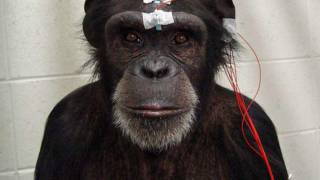A Hardware Update for the Human Brain
From Silicon Valley startups to the U.S. Department of Defense, scientists and engineers are hard at work on a brain-computer interface that could turn us into programmable, debuggable machines
Emily Borghard has a computer inside her skull, but you wouldn’t know it to look at her. A small bump behind her left ear, the only external evidence of her implant, is partially covered by a tuft of hair that’s still growing in from the last time she had the batteries changed.
Before Borghard received a brain implant, she was having as many as 400 “spikes” of seizure-like activity a day, along with multiple seizures. This unrelenting storm of abnormal neural activity turned her teenage years into a semiconscious nightmare. She couldn’t drive a car, attend classes or be left alone for more than half an hour. “People were finding me on the floor, finding me walking around the small college town we were living in, confused and not knowing what was going on,” she says.
In 2011, at the age of 19, Borghard underwent a radical surgical procedure for drug-resistant epilepsy. Surgeons cut into her skull and implanted a small, self-contained computer that resembles a Zippo lighter in the hippocampus of her brain. The implant uses a pair of long, hair-thin electrodes to listen for irregular neural activity, which it regulates with a series of pulses. Every two days, Borghard holds a small electronic device over her implant, which transmits data to a laptop and then on to Neuropace, the Mountain View, Calif., company behind the “responsive neurostimulation system,” or RNS, in her head. Borghard’s doctor reviews the data to continually assess and adjust her treatment.
Today, thanks to a combination of her implant, surgery and medication, Borghard, 27, experiences an average of just two seizures a month. She recently earned a master’s degree in social work and hopes to work someday as a patient advocate at the hospital where she volunteers.
The field that gave Emily her life back is known as neurotechnology, or simply neurotech—a marriage of neurology, neuroscience, neurosurgery and the kind of hardware that goes into smartphones. Today, most neurotech companies are focused on medical applications, which they think could be a multibillion-dollar market. Deep-brain stimulators, which use electric pulses to reduce the tremors associated with Parkinson’s disease, have been implanted in more than 100,000 people. Preliminary research suggests that targeted brain stimulation with similar technology can improve recall in those with memory loss—a potential game-changer for the 5.4 million Americans with Alzheimer’s disease. Neuropace’s RNS system is currently the only FDA-approved implant able to both sense and respond to neural activity. Medical-device makers such as Medtronic, Boston Scientific and Stryker aren’t far behind.
But a number of players have entered the field of neurotech with a different goal: cognitive enhancement of healthy humans, made possible by the formal, physical union of computers and our brains.
The largest contributor to neurotech has been Darpa, the research arm of the Department of Defense, which has a long record of pushing scientists and engineers to achieve the seemingly impossible. Darpa birthed the Arpanet, which eventually became the internet, and was also behind GPS and the world’s first successful self-driving cars. Its medical-research division has funded studies that use implants similar to the one created by Neuropace to treat everything from traumatic brain injury to psychiatric disorders.
Darpa has also committed $60 million to create what’s known as a “direct cortical interface,” a brain-computer connection unlike any that exists today. Neural implants like Emily Borghard’s can stimulate and record from just a handful of neurons. Darpa hopes to create a neural interface that can connect to as many as one million neurons.
A fully functional brain-computer interface on this scale would, in theory, turn a person into a programmable, debuggable machine—just like a computer. What used to be accomplished through drugs, training, education and psychotherapy could someday be achieved by more direct means. The goal is something akin to the scene in “The Matrix” where Keanu Reeves’s character learns kung fu from a quick download. “It’s almost like the design-build-test cycle” for designing new hardware and software, says Justin Sanchez, director of the biological technologies office at Darpa. This cycle of building a prototype, measuring its performance in the real world, and tweaking accordingly is how humans refine new technologies. Thanks to neurotech, we could someday use the same process to refine our brains.
Read the rest here.






















